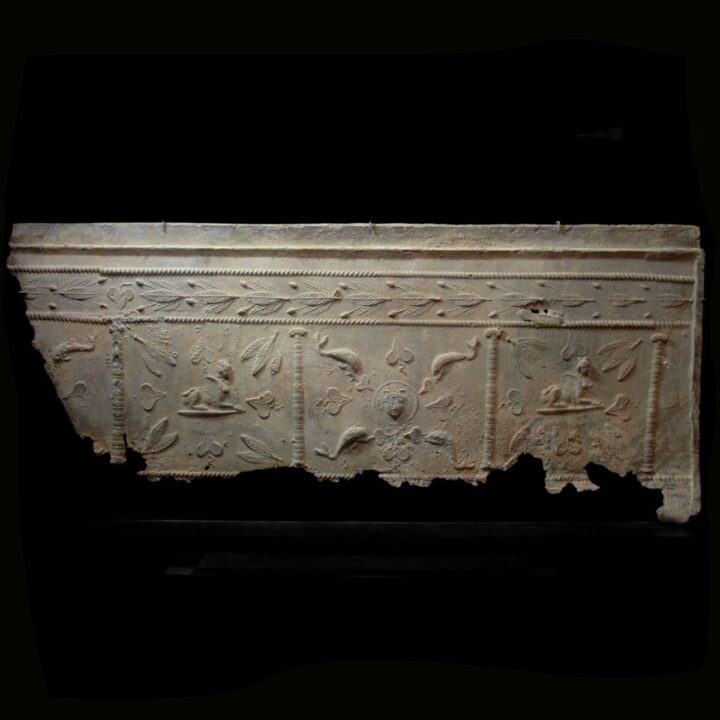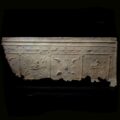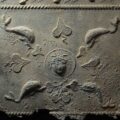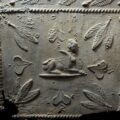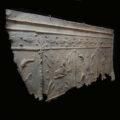Large Lead Relief of a Roman Sarcophagus with Medusa and Sphinxes
Culture: Roman
Period: 3rd century A.D.
Material: Lead
Dimensions: 44 cm x 101.6 cm
Price: 8 000 Euro
Ref: 3667
Provenance: US private collection, acquired prior to 1990. A fragment of the same sarcophagus was in the possession of Hyatt Lodge at the McDonald’s Campus, Oak Brook, USA and thence sold by the Desmet Gallery in Brussels, Belgium. Since 2016 in Great Britain. Last in the English art market.
Condition: Unrestored, very large fragment.
Description: Almost completely preserved side panel of a Roman lead sarcophagus with a fine relief. The plate is divided in square sections, separated by columns with Ionic capitals. In the sections alternating a Medusa surrounded by dolphins and wine leaves, as well a seated sphinx surrounded by wine- and laurel leaves. The sphinx with a human head and breasts, lion paws and at the back rolled wings. Like Medusa she also has apotropaic functions and served to protect the deceased. The dolphins in turn were companions on the journey to the other world. On top laurel leaves framed by horizontal cords. A raised rib forms the bottom of the image area. Lead sarcophagi came up in the second half the 2nd century in the Roman Empire. They were produced throughout in the Levant, especially in Tyre or Sidon and then exported to the western provinces. For example, very finely crafted models were found in Viminacium, in today’s Serbia. They were especially produced for upper middle-class citizens, who could not afford a marble sarcophagus. See for the typus Metropolitan Museum of Art in New York Accession Number 31.116a-I, as well as Penn Museum Coffin Panel B10280. Mounted.



